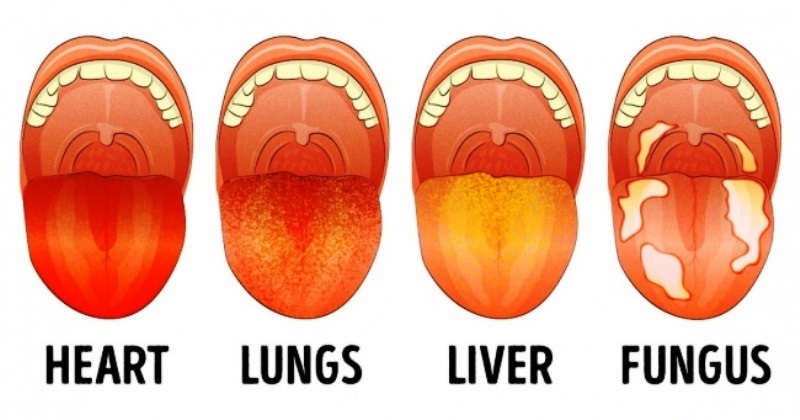Tongue diagnosis is a common method for determining the cause of health issues in some traditional medicines. It is the initial step on the 30-feet digestive tract, and it reveals what occurs under the inner digestive skin, which is the skin that lines the digestive tract.
The inner digestive skin:
- Regulates genetic and epigenetic alterations to the human genome
- Protects against environmental toxins
- Hosts trillions of beneficial bacteria
- Regulates the absorption of vitamins, minerals, and nutrients
- Is the location of the derivation of 95% of serotonin
- Is the place where 80% of the immune system is concentrated
Since we cannot see it, the tongue reveals its state and can indicate the status of the digestion.
A healthy tongue has pinkish color across its entire surface, with small cylindrical taste buds on the top surface. It has a very thin white coating of mucus, with no teeth marks, or cracks on it. It is not too dry or too wet.
The epithelium of the stomach is most directly connected to the appearance of the tongue, so the mucus lining quality can be revealed by the tongue lining.
Swollen Tongue
It means that the lymphatic system has become congested, backing up into the cervical lymph nodes, adenoids, tonsils, and tongue.
Pale Tongue
It is a sign that the body lacks the proper amount of good stomach acid and digestive enzymes in order to digest food properly and absorb nutrients, minerals, and vitamins.
Dry Tongue
This clearly shows that the stomach is dehydrated and it cannot digest foods properly.
Acid Tongue
Acid tongue, characterized by redness, and dryness, is a sign of heartburn, which is caused by the accumulation of stomach acid, which irritates the stomach, tongue, mouth, and esophagus.
Boggy Tongue
A boggy tongue is a sign of digestive issues, and it looks swollen, wet, and pale.
IBS Tongue
The IBS tongue is wet, pale, and smooth, due to the reduced stomach acid in the stomach, in an attempt to protect the intestinal wall from further irritation.
Spinal Or CNS Stress Tongue
Chronic stress in the central nervous system and spinal stress due to injury leads to a deep crack running down the center of the tongue.
Malabsorption Tongue
A clear sign of malabsorption is a tongue with visible teeth marks on the sides, discolored on the surface.
Ama Tongue
In the traditional Ayurvedic medicine, Ama refers to the accumulation of improperly digested food that in turn clogs the intestinal tract. This causes the accumulation of a thick coating on the tongue, and if this buildup is on the tongue’s back, it indicates toxic deposits in the large intestine.
Movie Star Tongue
This is the state of a red, moist, and smooth tongue. The tongue becomes red due to the excessive amounts of acid in the body, moist due to the high mucus levels released to protect the stomach lining, and smooth, as a result of the retracted taste buds.
Wet Tongue
A wet tongue can be a result of the excessive levels of Kapha (phlegm) caused by undigested proteins, such as gluten or casein, chronic stress, or severely irritated stomach lining, or intestinal wall.
Stress Tongue
In the case of stress, the tongue becomes dry and has numerous small cracks on the surface.
Therefore, next time you are feeling off balance, just look at your tongue, and you will easily diagnose the cause of it!
Source: www.healthy-holistic-living.com
